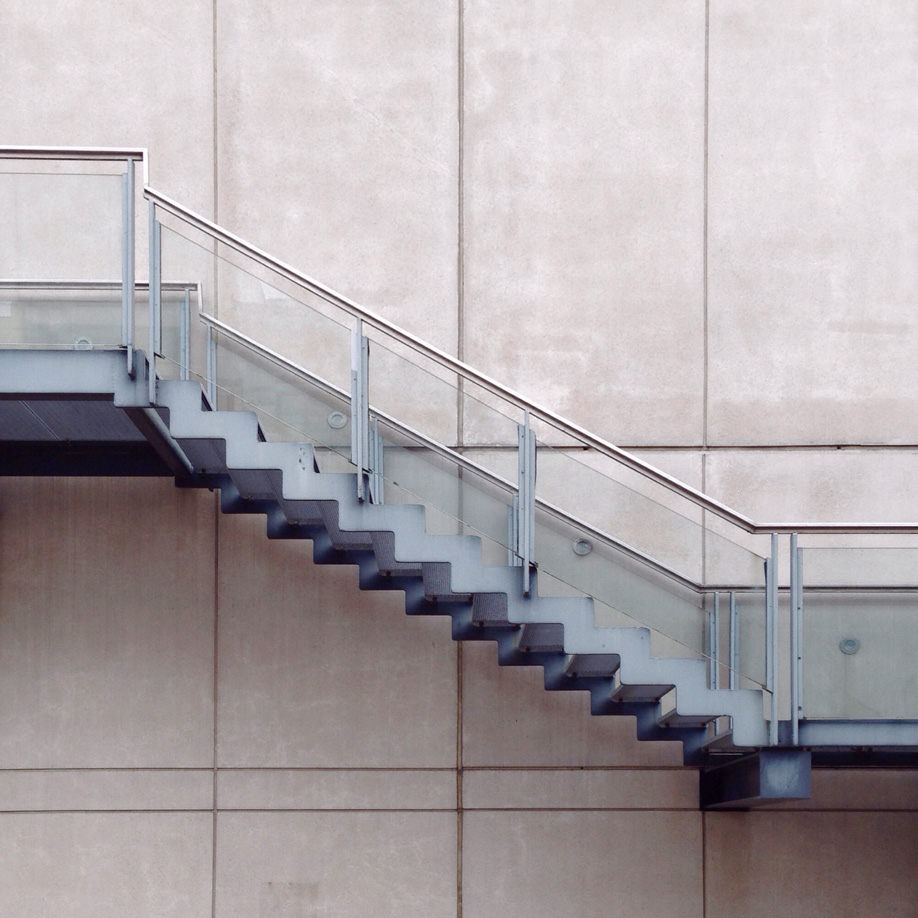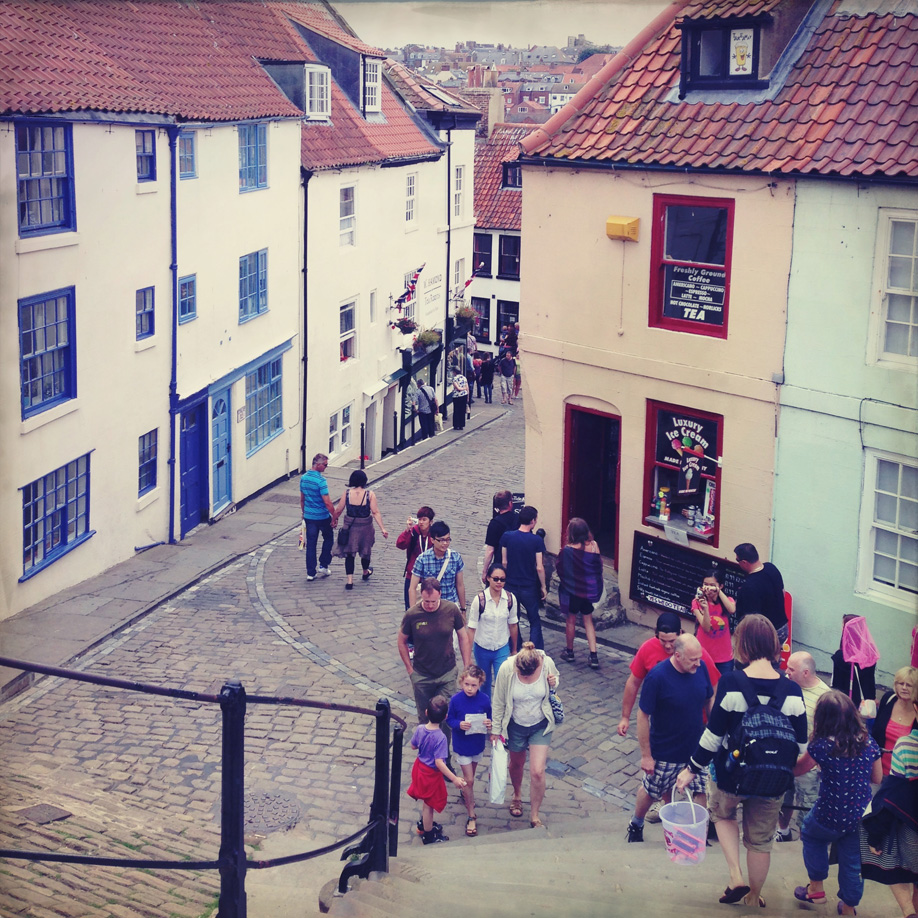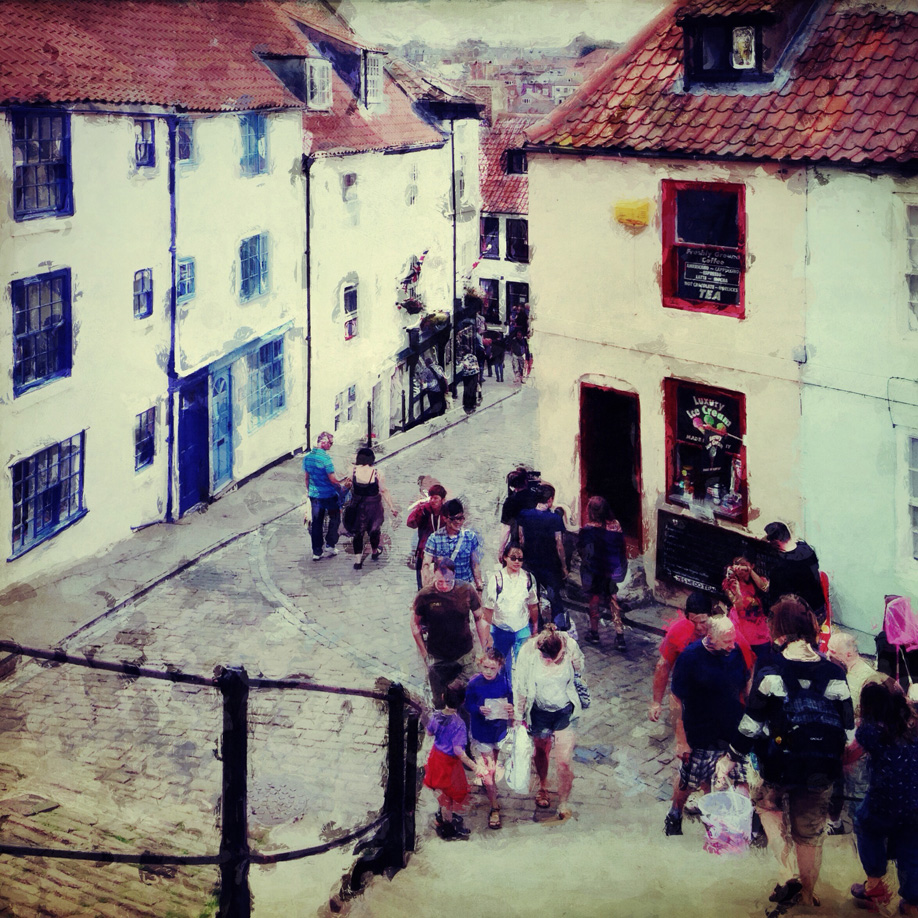Last week I wrote about depth of field and the challenges facing mobile photographers. This week, I wanted to start to expand the theme by looking at one of the elements of tilt-shift in mobile photography.
Toy Town
This article isn’t about the miniaturisation interpretation of tilt shift but I wanted to mention it in passing. The phrase tilt-shift photography is often associated with giving a real life environment a toy town appearance. Any number of iPhone apps have sprung up devoted to creating just this look. Even apps that don’t specialise in the look include ‘tilt-shift’ filters such as the excellent Snapseed.
A search of the ‘tilt-shift’ hash tag on Instagram will bring up numerous examples. Here is one example of my own:
The key element is a very narrow depth of field normally positioned in a horizontal band towards the centre of the image. The toy town look tends to be most successful with a clear image taken looking down and out across a large cityscape or landscape but tilt shift effects can be applied to any image with interesting results.
Specialist tilt shift apps and general apps with tilt shift filters will not generate the beautiful out of focus light effects I looked at in my depth of focus article. They tend not to try to simulate a true out of focus effect preferring instead to apply normally quite a sharp gradient blur to the scene. For this reason I tend to use the depth of field effect apps discussed last week to mimic the effect with a little more authenticity.
Shifting in mobile photography
Toy town is a fun interpretation of tilt shift photography but this week I wanted to start the process of breaking tilt shift down into its component parts. This week I want to look specifically at the shift aspect.
Traditional photography equipment affords the ability to attach specialist tilt shift lenses giving independent control over both aspects. In mobile photography, realistically our options are limited to apps but unlike depth of field, simulating the shift effect is very straight forward.
What is Shifting?
The purpose of shifting is to correct perspective distortions. For example when capturing an image from ground level you will often capture various buildings. The vertical lines of these buildings will converge with height. By shifting the image with an app in post processing we can correct this perspective distortion.
This is an example of an image captured looking up. It’s a good example because the numerous vertical and horizontal lines demonstrate the converging vertical lines issue really well. It also demonstrates the importance of positioning yourself when capturing the image. In this case I knew I was correctly aligned square on to the building by looking at all the horizontal lines and ensuring they remained level and parallel.
Accuracy is really important when capturing a relatively simple subject like this.
FrontView – Newer apps are a little more polished and interactive but FrontView has been a workhorse for me. You simply import the image, position each of the four corners and save. Recently this app went free.
I have yet to come across a general app that includes this functionality. For that reason, when I consider my top 10 apps I always include a specialist ‘shift’ app.
Other apps I use include:
- SKWRT – quite a new app. Also corrects (or adds) other types of distortions including lens distortions.
- Perspective Correct
After ‘shift’ processing you can see the converging vertical lines have been corrected. It gives the impression that I am face on and level with the centre of the image. This image was captured and edited as part of an experiment looking at the Ministract style (part minimal part abstract – see Tom McLaughlan).
When I play with a painterly style of processing it gives me the opportunity to imagine how I would draw a scene. Even if the reality is different, artistic license tends to mean that I’ll look to establish non-converging vertical lines.
One final note on shifting. For me converging vertical lines can add a dynamic quality to an image. Indeed many photographers enjoy using short focal length lenses which exaggerate them. In my opinion, correcting converging verticals or any other distortions for that matter should not be an automatic action but one taken after artistic consideration. I often enjoy enhancing or even creating distortions rather than restricting myself to simply correcting them.
Next week I plan to look at the ‘tilt’ aspect of tilt shift photography. Tilting is an area I particularly enjoy.
Skip
Known as Skip to friends, Paul is an exhibited, commissioned and prize winning iPhone photographer from Lincoln, England. He runs his own successful blog at skipology.com outlining the apps and processes involved in creating his images. His style ranges from low edit street shots to highly textured / painterly composites all created using only the iPhone and iPad. Socially, connect with Skip on Facebook at www.facebook.com/skipology Instagram atinstagram.com/skipology or Twitter at twitter.com/skipology








